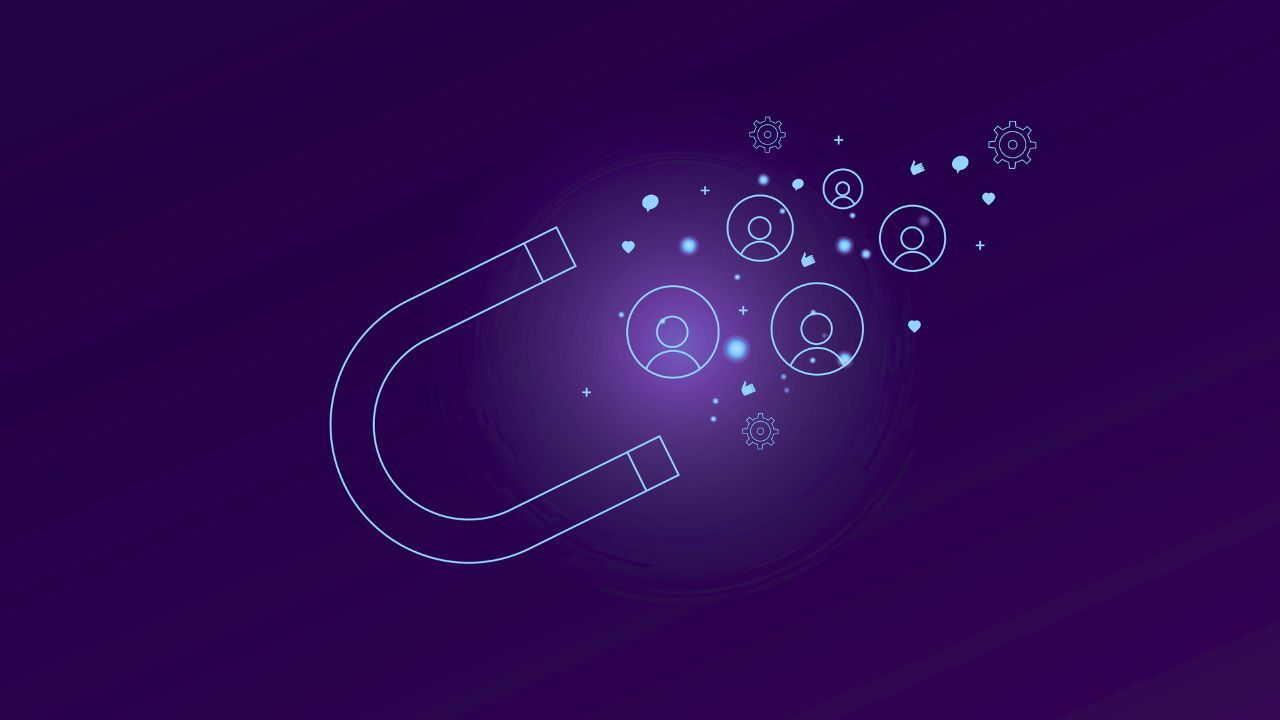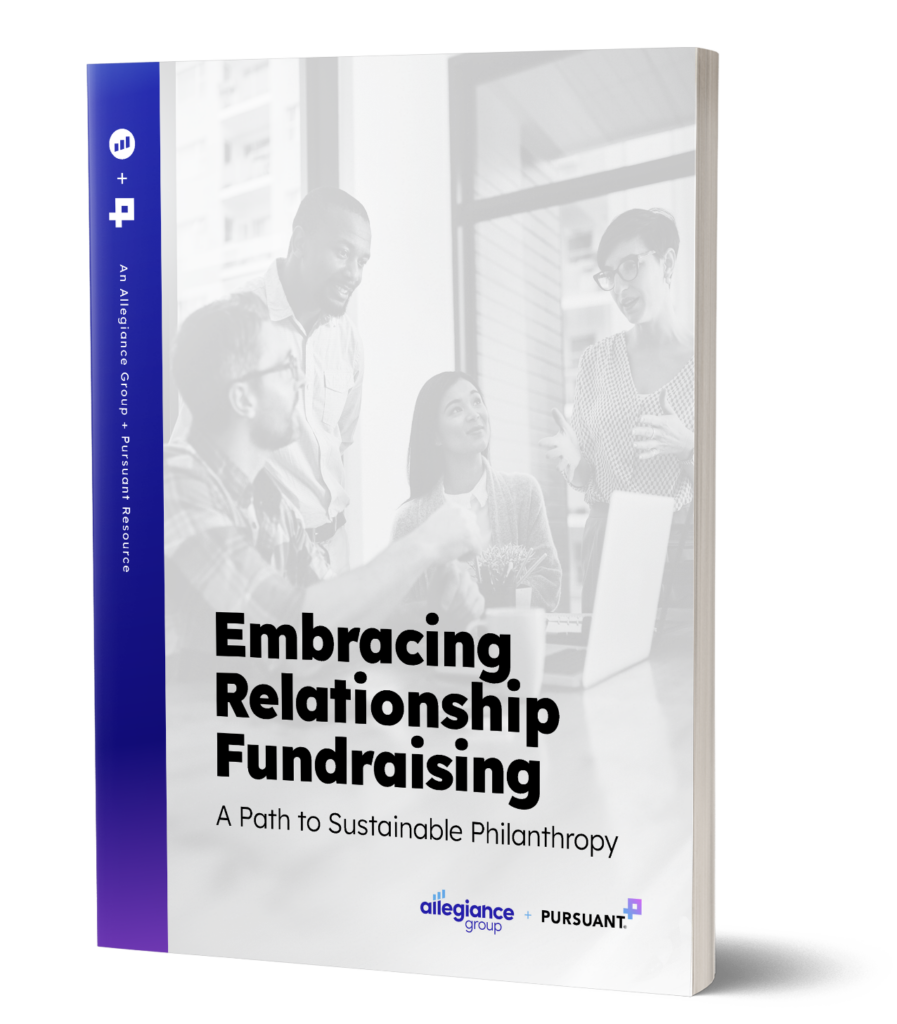How To Turn a First Gift into a Heartfelt Connection

Think of an exceptional experience you’ve had with a commercial brand. Perhaps this business always seems to know what you need, when you need it. Or maybe it goes above and beyond to determine what you like and tailor interactions and offerings accordingly.
Companies are getting better and better at delivering personalized, engaging experiences to their customers, and they’re being rewarded with deep loyalty. It’s time for nonprofits to do the same.
Developing a heartfelt connection with a donor begins with their very first gift. If you can make them feel seen, special, and valued from the outset, they’ll be more likely to give again and again, kicking off a long-lasting relationship that’s a win-win for you both. Let’s explore how, by humanizing engagement, a donor can become more than just a data point.
Why Donor Experience Matters
An outstanding experience can turn a simple donor into an ambassador for your organization and its mission. Consider how loudly you sing the praises of a company you love — this is what you want donors to do for you.
Not only do your supporters crave recognition, but they also want to see the impact of their gift. Give them what they want, regardless of the donation amount. By doing so, you demonstrate to donors that you understand what matters to them. This makes them happy, which translates to a greater lifetime value for you.
Acquiring new donors is only getting more difficult and expensive, so it’s crucial to boost donor loyalty. Nonprofits typically retain about 20% of first-time donors. That means that for every 100 donors, only about 20 will give again in the following year. But if you can get a second gift, their retention rate triples to 63%.
Convert first-time donors to monthly donors, and the retention rate jumps to 90%. With the right donor experience, you can build a pool of sustained supporters who believe in your mission, feel valued, and want to continue their funding long-term.
A final note about why donor experiences matter: We all see ourselves a certain way, and we want to portray that image to the world. While this often comes across through possessions, like the clothes we wear or the vehicle we drive, it can also be conveyed through the organizations we support. The donor experience is your opportunity to validate how your supporters want to be seen or thought of.
Your Response to the First Gift Is Critical
When it comes to the donor experience, the goal is to surprise and delight. Elevate their expectations for how nonprofits interact with them. It all starts with their first gift.
Your response to a donor’s first gift sets the tone for the experience they can expect. It informs whether they want to make a second gift to your organization. This is crucial for nonprofits to understand and communicate.
Consider your current process for thanking a first-time donor. Are you sending a standard gift receipt? If so, you may leave donors wanting more. But if you have a well-thought-out welcome series that details how their gift is used and tries to get to know them, donors feel valued. If you can go a step further and personally thank donors, they’ll feel singled out and special.
Making a donor feel special is the foundation of long-term support. Two-thirds of your major donors start with a single, one-time gift. To ensure you don’t let future major donors slip through your fingers, give them the experience they deserve.
Crafting a Donor Welcome Series

The care and attention you show as you welcome new donors is their first look at your stewardship experience, so it’s essential to make a good impression. Let’s explore the elements of a compelling welcome series, which is ideally spread over 45–60 days.
1. A Timely Thank You
When a gift comes in, a thank-you message should be sent as soon as possible. No matter the amount, treat this as more than just another transaction. Thank online donors immediately with a warm message, and follow it up with a heartfelt email, postcard, or letter.
2. A Phone Call
Make it a priority to call as many of your donors as you can — especially the new ones. Again, even if the gift amount is small, a phone conversation goes a long way in helping donors feel recognized. It’s also an opportunity for you to get to know them better.
3. A Survey
An exceptional donor experience is one in which your supporters feel heard. So, your welcome series should include a survey or another way for them to share their thoughts and opinions. You can then segment these donors to receive communications about the things that matter to them.
4. A Second Ask
Don’t be shy about asking for another gift too soon. Take what you’ve learned about your donor and use it to zero in on a program or service that’s more likely to resonate with them. Then, present the program as an opportunity for them to continue supporting your mission.
How To Elevate Your Donor Engagement
To level up your donor engagement strategy, go straight to the source: your donors. Each donation or interaction brings you a wealth of data that can inform how you communicate with a constituent moving forward.
Combine the data with donor surveys, and you have a roadmap for precisely how your supporters want to engage with your organization. This includes how and how often you communicate with them, what programs drive their interest, and how their support might evolve in the future. Honoring their preferences is what turns engagement into loyalty.
Tip 1: Get the Data You Need
Two types of data are critical to the donor experience: primary and third-party. Examples of primary data include the gift amount and frequency, whether they attended your event, or whether they opened your email or text. It’s what you learn about a donor from their actions.
Third-party data is collected and managed by a company or organization that doesn’t directly interact with donors. Acxiom and Experian are two well-known examples. Through this data, you can see the types of nonprofits a donor supports, their overall philanthropic giving, and who might be a good candidate to upgrade.
A tool like GivingDNA brings both primary and third-party data together in one place so you can deliver a more personalized donor experience. A data-driven strategy trumps a one-size-fits-all approach every time because it enables you to engage each constituent with content that you know will compel them to give.
Tip 2: Build a Better Survey
The amount of content produced every day is astounding:
- 4.4 million blog posts
- 4 petabytes of data on Facebook
- 500 million posts on X
- 95 million photos and videos on Instagram
- 720,000 hours of video on YouTube
The secret to standing out is relevancy, which a survey helps you attain. Donors will tune out if the email they receive isn’t relevant to them, so ask questions they’ll be motivated to answer. For instance:
- Why did you first give to our nonprofit?
- Why does this cause matter to you, and why now?
- What is your relationship to this cause?
- What program interests you the most?
- What results do you want/expect our organization to produce?
- How do you prefer to be communicated with, and how often?
Once you have their responses, honor them. If a donor prefers text messages, don’t bombard them with phone calls. If their donation was to support a friend or family member, warm them to your organization with less-frequent communications.

Relationship fundraising is not just relevant — it’s essential. Create lasting impact with your supporters. Download “Embracing Relationship Fundraising: A Path to Sustainable Philanthropy.”
Wrapping Up: Lock In Donor Loyalty
For most donors, you have about 90 days to make a transformative first impression. That’s just three months to turn a one-time donor into a long-lasting supporter.
A timely and authentic stewardship communication is critical. Depending on your budget, this could be a next-day digital outreach followed by a direct mail piece a week later. Personal outreach, such as a phone call, is the most effective. For instance, train volunteers to call donors who have given over a certain level within a week of their gift.
After this initial thank you, launch your welcome series. Many email programs allow you to automate this process, including donor segmentation. Finally, be sure to audit the 90-day journey to identify areas for improvement. Even minor tweaks can improve your retention rates, bring in more revenue, and lower your acquisition costs.
Our team at Allegiance Group + Pursuant would be delighted to help you develop a more engaging donor experience. Together, we can create meaningful relationships that inspire lifelong giving among your supporters. Connect with us today.
This blog post is based on an episode of the Go Beyond Fundraising podcast. Listen to the entire conversation now: From Data to Fierce Loyalty: Humanizing Donor Engagement.